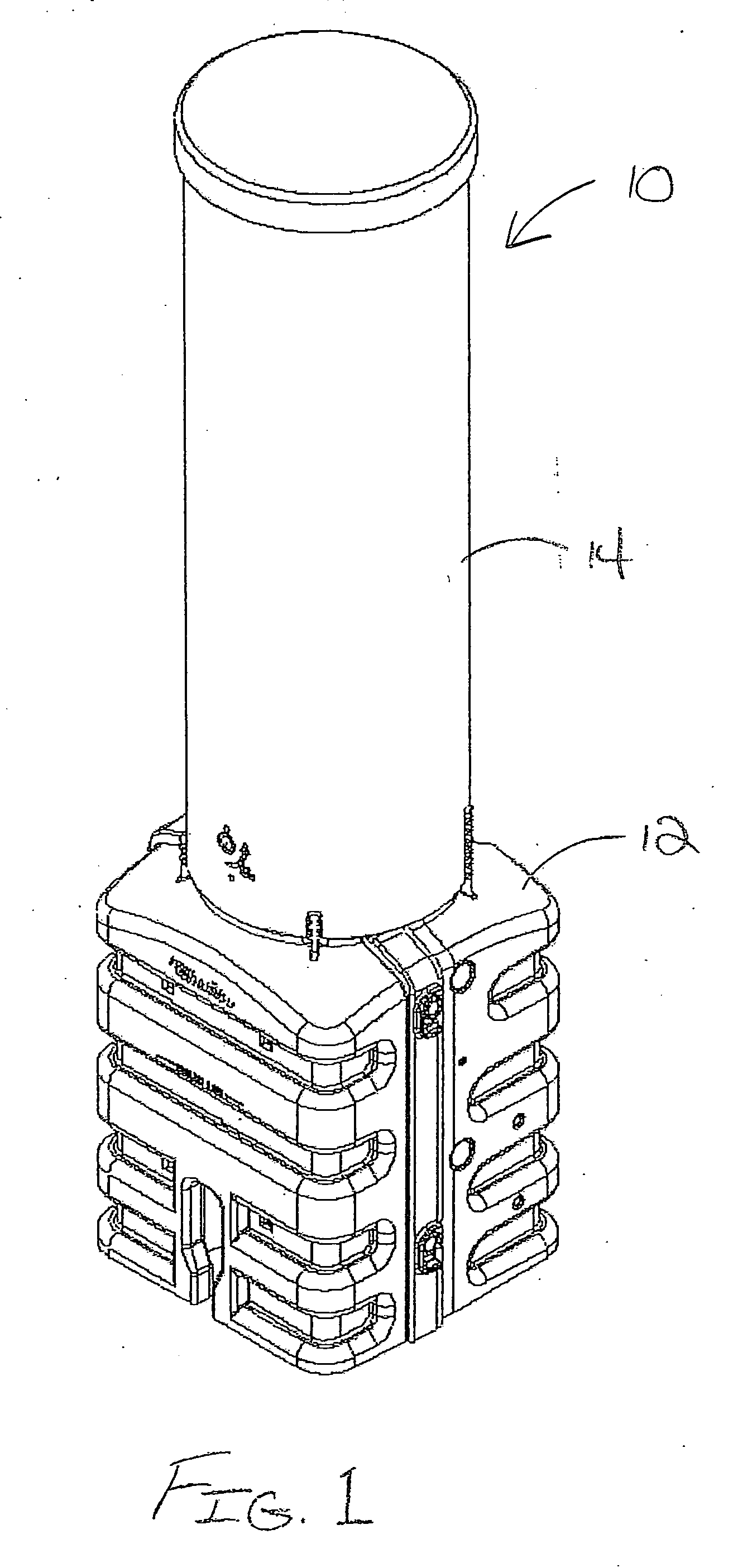Fiber optic splice enclosure
- Summary
- Abstract
- Description
- Claims
- Application Information
AI Technical Summary
Benefits of technology
Problems solved by technology
Method used
Image
Examples
Embodiment Construction
[0041]Referring now to FIG. 1 of the drawings, there is illustrated an exemplary fiber optic splice enclosure 10 constructed in accordance with the teachings of the present invention. The illustrated fiber optic splice enclosure 10 has a pedestal configuration that includes a base section 12 and a cover or dome 14. In this case, the cover 14 nests in a telescoping fashion over the base section 12 so as to define an interior space within the enclosure 10 that can house fiber optic splice connections and other telecommunications equipment. Inside the enclosure 10, the splices and other equipment are protected against damage from water, fire, wind-blown dust and debris and impact. When in-use, at least a portion of the base section 12 is typically filled with dirt and / or gravel and buried in the ground. Fiber optic cables can be fed into the interior space of the splice enclosure 10 through one or more openings in the base section 12.
[0042]The use of the pedestal configuration for the ...
PUM
 Login to View More
Login to View More Abstract
Description
Claims
Application Information
 Login to View More
Login to View More - R&D
- Intellectual Property
- Life Sciences
- Materials
- Tech Scout
- Unparalleled Data Quality
- Higher Quality Content
- 60% Fewer Hallucinations
Browse by: Latest US Patents, China's latest patents, Technical Efficacy Thesaurus, Application Domain, Technology Topic, Popular Technical Reports.
© 2025 PatSnap. All rights reserved.Legal|Privacy policy|Modern Slavery Act Transparency Statement|Sitemap|About US| Contact US: help@patsnap.com



